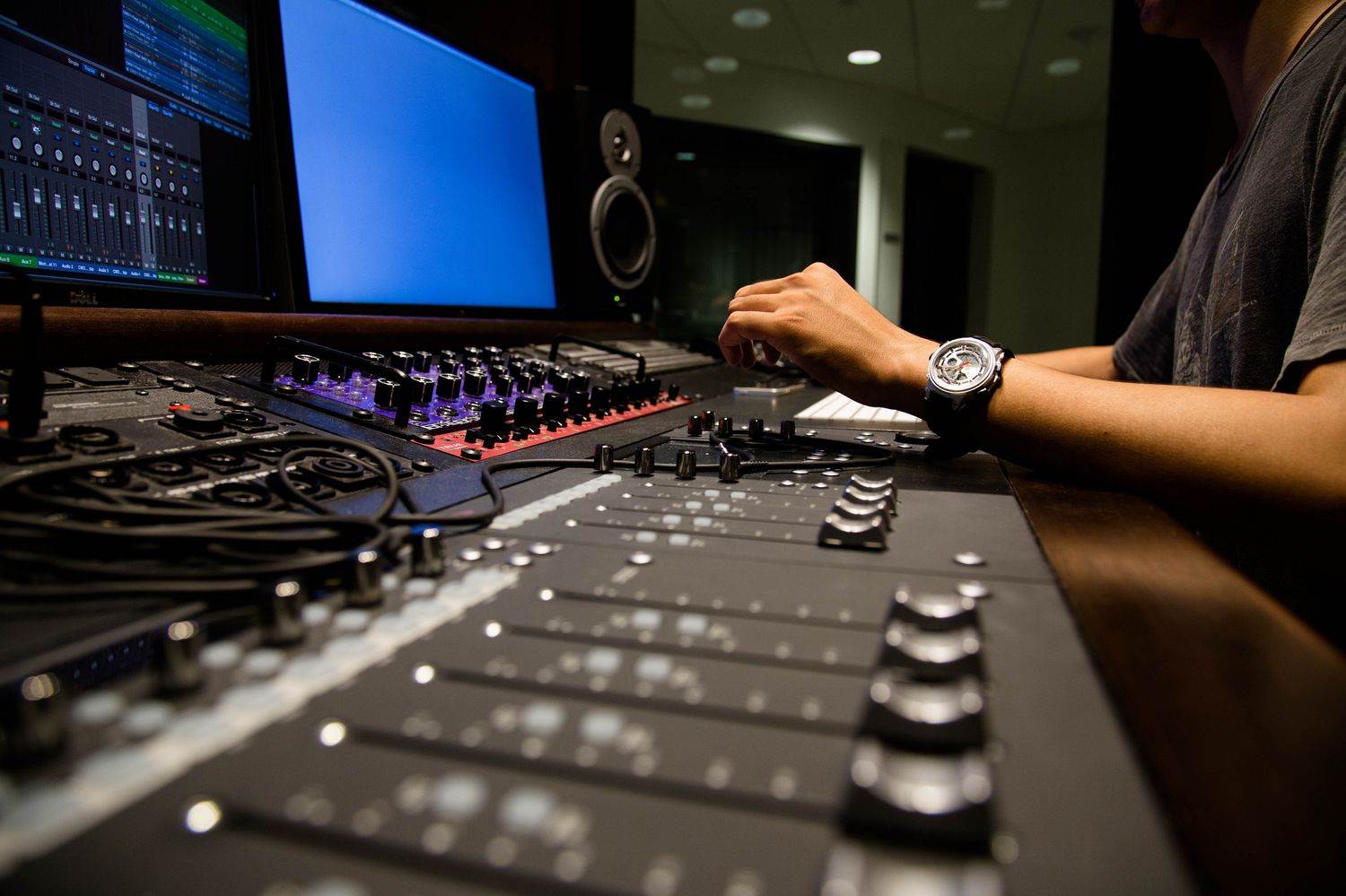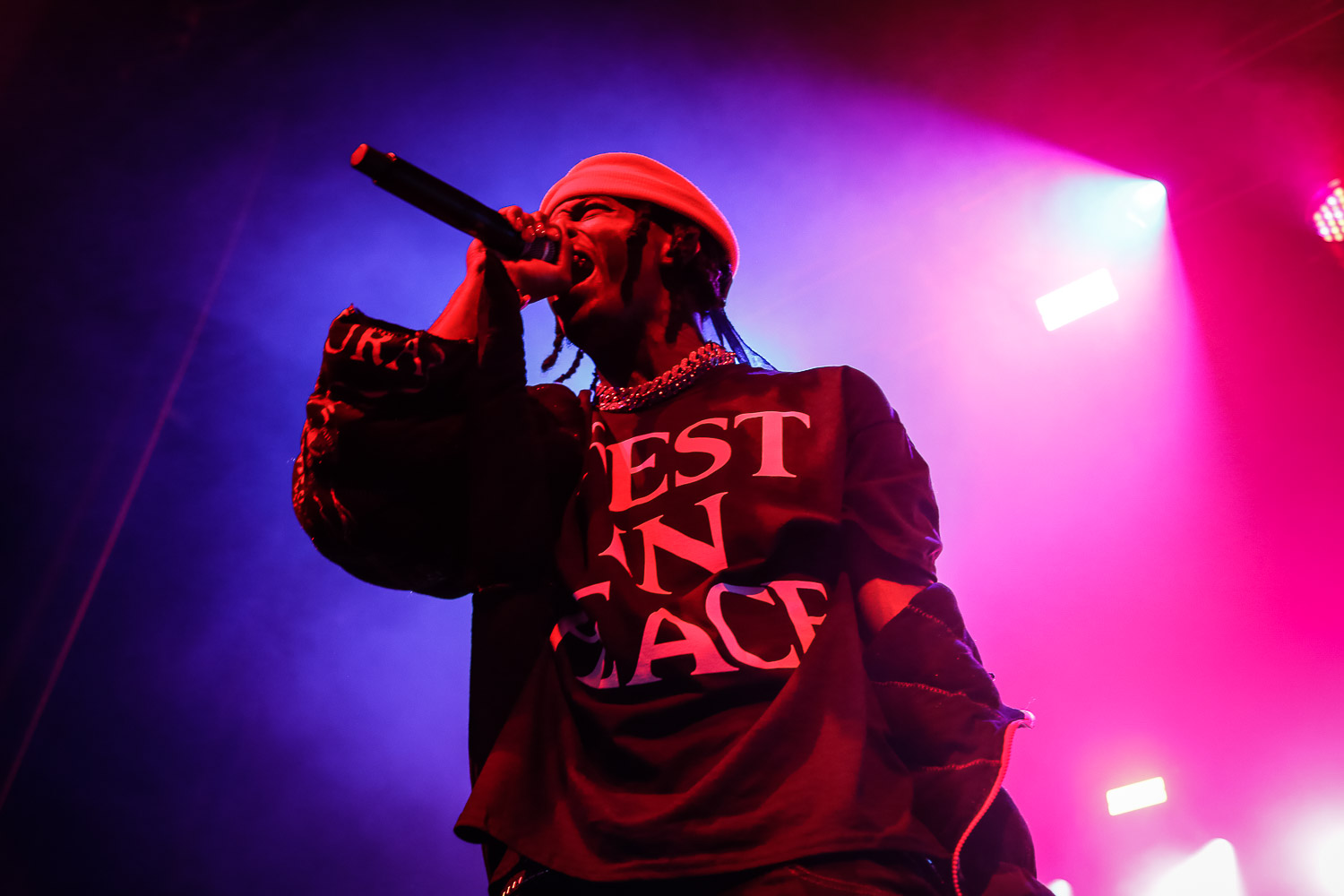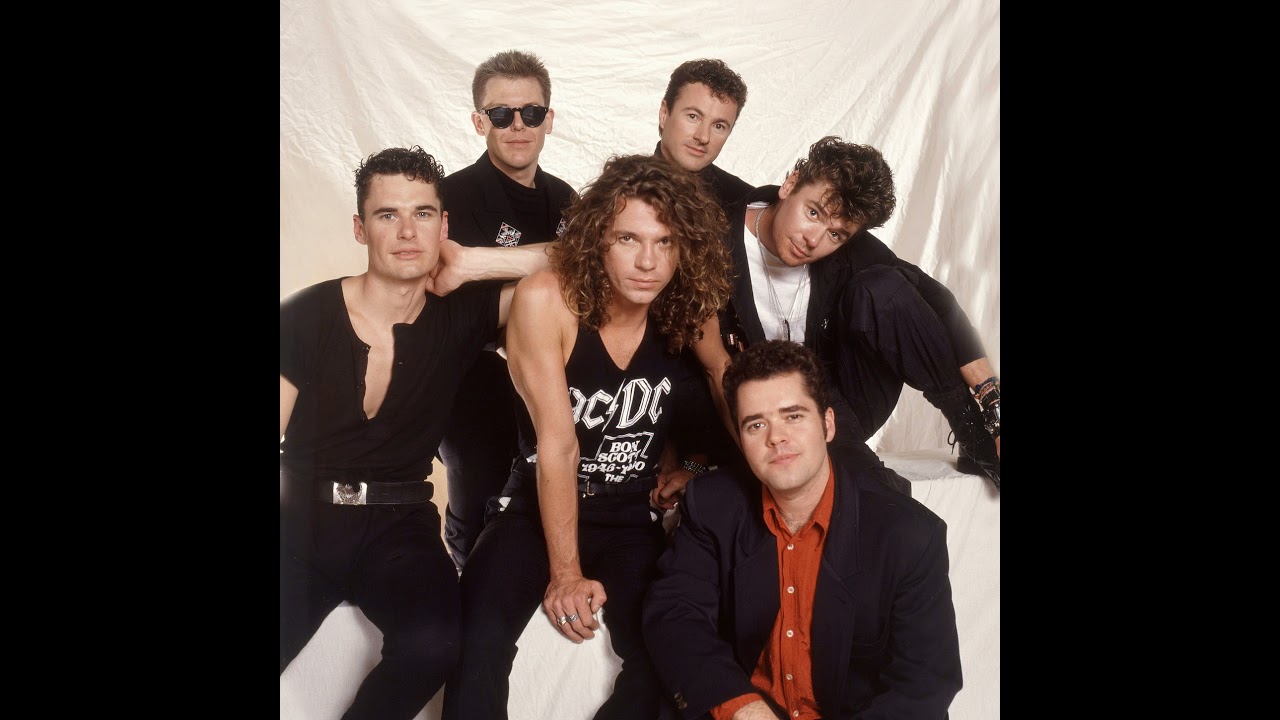Home>Production & Technology>Remix>What Is A Music Remix


Remix
What Is A Music Remix
Modified: January 25, 2024
Discover the art of music remixing and unleash your creativity. Learn what a music remix is and how it can transform your favorite songs. Get inspired and start remixing today!
(Many of the links in this article redirect to a specific reviewed product. Your purchase of these products through affiliate links helps to generate commission for AudioLover.com, at no extra cost. Learn more)
Table of Contents
Introduction
Music remixing has become an integral part of the modern music industry. It has revolutionized the way we listen to and experience music. From DJs and producers to artists and music enthusiasts, remixing has provided a platform for creativity, experimentation, and innovation.
But what exactly is a music remix? In simple terms, a remix is a modified version of an original music track. It involves taking elements, such as vocals, beats, or melodies, from an existing song and rearranging, altering, or adding new elements to create a fresh and unique sound.
Remixing has its roots in the early days of recorded music, where artists and producers would release different versions or reworkings of popular songs. However, with the advancements in technology and the rise of electronic music, remixing has taken on a whole new level of complexity and popularity.
In this article, we will explore the world of music remixing, delving into its definition, history, techniques, benefits, challenges, and popular examples. We will also examine the impact it has had on artists and the music industry as a whole.
Whether you’re a fan of electronic dance music, hip-hop, or any other genre, understanding the art of music remixing can provide a deeper appreciation for the creative process behind your favorite tracks.
Definition of Music Remix
A music remix refers to the process of taking an existing song and modifying it by rearranging, adding, or altering elements to create a new version. It is a creative approach to music production that allows artists, producers, and DJs to put their unique spin on a track.
When it comes to remixing, there are several approaches that can be taken. Some remixes may involve changing the tempo, adding new instrumentation, manipulating the vocals, or creating entirely new sections within the song. The goal is to provide a fresh and unique perspective on the original composition while maintaining a connection to its core elements.
Remixes can be created by both professional musicians and amateurs alike. Thanks to advancements in technology, anyone with a computer and the right software can experiment with remixing. This has opened up new opportunities for aspiring artists to showcase their skills and creativity.
It’s important to note that a remix is different from a cover or a mashup. While a cover involves reinterpreting a song using a different arrangement or performance, a remix focuses on manipulating and reshaping the existing elements of the original track. A mashup, on the other hand, involves combining elements from multiple songs to create a new composition.
Remixes have become increasingly popular in various genres of music, including electronic dance music, hip-hop, pop, and rock. They provide a way for artists to collaborate, cross-pollinate musical styles, and introduce their work to new audiences.
History of Music Remix
The history of music remixing can be traced back to the early days of recorded music. However, it wasn’t until the rise of disco and electronic music in the 1970s that remixing took on a more prominent role in the industry.
In the 1970s, DJs in clubs began extending songs by using two record players and a mixer to seamlessly transition from one track to another. This technique, known as “beatmixing,” laid the foundation for remixing as we know it today.
As the popularity of disco music grew, DJs started experimenting with remixing tracks by adding drum breaks, overdubs, and other effects to create extended and reimagined versions of songs. This allowed them to keep the energy on the dancefloor flowing and cater to the desires of club-goers.
One of the pioneers of remixing in the disco era was Tom Moulton. He is credited with creating the first officially commissioned remix, a 12-inch version of “Ten Percent” by Double Exposure. This marked a significant moment in the history of remixing, as it demonstrated the commercial potential of reworking existing songs.
In the 1980s, remixing became more prevalent in the mainstream music industry. Producers and remixers like Shep Pettibone, Arthur Baker, and Francois Kevorkian gained recognition for their remix work with popular artists such as Madonna, Michael Jackson, and Duran Duran.
With the advent of digital technology in the 1990s, remixing became even more accessible. Artists and producers could now use software and samplers to manipulate and reshape songs, giving rise to new genres like electronic dance music (EDM) and the remix culture surrounding it.
Today, the art of remixing continues to evolve and thrive. Remixes are not only sought after by DJs and clubs, but they have also become a marketing tool for artists and record labels. Remix contests and collaborations between artists have become commonplace, allowing for the exploration of different creative possibilities and giving rise to new interpretations and sounds.
The history of music remixing showcases the impact that technology, creativity, and the desire for musical experimentation have had on the evolution of the music industry. It has transformed the way we engage with music, bringing new life to existing songs and providing an avenue for artists to express their unique vision.
Types of Music Remixes
Music remixes come in a variety of forms, each with its own unique style and purpose. Here are some of the most common types of remixes you may come across:
- Extended Mix: This type of remix focuses on lengthening the original track by adding extra sections, instrumentals, or breakdowns. Extended mixes are often used by DJs in clubs to keep the energy on the dancefloor going.
- Radio Edit: A radio edit remix is a shorter version of the original track, typically with less build-up, breakdowns, or repetitive sections. These remixes are created with radio airplay in mind, enabling the song to fit within a specific time slot and appeal to a broader audience.
- Dance Remix: Dance remixes cater to the electronic dance music (EDM) genre, enhancing the original track with high-energy beats, drops, and electronic elements. These remixes are often created with the intention of filling dancefloors and captivating listeners at festivals and clubs.
- Acoustic Remix: Acoustic remixes strip down the original track, focusing on live instruments and a more intimate, stripped-back sound. These remixes often bring a fresh perspective to a song and showcase the artist’s vocal or instrumental talents in a different light.
- Dub Remix: Dub remixes place emphasis on the rhythm and bass elements of a song. They often feature heavy use of delays, echoes, and reverb effects, creating a spacious and hypnotic sound. Dub remixes are popular in genres like reggae, dubstep, and electronic music.
- Mashup: A mashup remix combines elements from two or more songs to create a new composition. This type of remix often involves layering vocals or instrumentals from different tracks on top of each other to create a unique and sometimes unexpected musical experience.
- Bootleg Remix: Bootleg remixes are unofficial remixes created without express permission from the original artist or record label. They often involve blending elements from different songs or incorporating samples from other tracks. Bootleg remixes are commonly shared among DJs and fans on online platforms.
These are just a few examples of the diverse types of music remixes that exist. Remixing allows for endless possibilities in transforming and reinventing songs, adding a new dimension to the original composition and providing listeners with fresh and exciting musical experiences.
Techniques Used in Music Remixing
Music remixing is a creative process that involves various techniques and approaches to transform an original track into a new and exciting composition. Here are some common techniques used in music remixing:
- Isolating Vocal Stems: One of the primary techniques in remixing involves isolating the vocal stems from the original track. This allows remixers to manipulate, rearrange, or enhance the vocals to create a new dynamic within the remix.
- Adding New Instrumentation: Remixers often incorporate new musical elements into the remix, such as additional instruments, synthesizers, or percussion, to give the track a fresh and unique sound. These new elements can help redefine the mood and atmosphere of the remix.
- Changing Tempo and Key: Altering the tempo or key of the original track can dramatically transform the vibe and energy of a remix. Speeding up or slowing down the tempo and shifting the key can offer a new perspective on the song, allowing remixers to explore different musical possibilities.
- Creating New Arrangements: Remixers often restructure the original composition by rearranging sections, changing the order of verses and choruses, or introducing new musical transitions. This helps bring a fresh and interesting narrative to the remix.
- Utilizing Effects and Processing: Remixers employ various effects and processing techniques to enhance and shape the sound of the remix. This can include adding reverb, delay, chorus, or distortion to elements of the original track, creating new textures and adding depth to the remix.
- Chopping and Sampling: Chopping and sampling involve taking snippets or loops from the original track and incorporating them creatively within the remix. This technique allows remixers to highlight specific moments or motifs from the original song and create new rhythmic patterns or musical motifs.
- Introducing Remix-Specific Elements: Remixers often add their own signature elements to the remix, such as unique sound design, vocal ad-libs, or additional melodies. These added elements give the remix a personal touch and help distinguish it from the original version.
- Using DJ Techniques: DJs employ various techniques like beatmatching, scratching, and looping to create seamless transitions and build energy in their remixes. These techniques are especially prevalent in dance remixes, where DJs aim to keep the crowd engaged and the momentum high.
These techniques are just a glimpse into the vast array of possibilities and creative choices remixers have at their disposal. The key is to use these techniques in a way that respects the original composition while introducing new and unique elements that breathe new life into the remix.
Benefits and Influence of Music Remixing
Music remixing has had a profound impact on the music industry and offers numerous benefits to artists, producers, and listeners alike. Here are some of the key benefits and influences of music remixing:
- Creative Exploration: Remixing allows artists and producers to explore their creativity and experiment with different sounds, styles, and genres. It provides a platform for pushing boundaries, trying new techniques, and pushing the limits of musical expression.
- Collaboration and Community: Remixing often involves collaboration between artists, producers, and DJs. Remix contests and collaborations allow for cross-pollination of ideas and foster a sense of community within the music industry.
- Increased Exposure: Remixing existing songs can help aspiring artists gain exposure and attract new listeners. A well-crafted remix has the potential to go viral or catch the attention of industry professionals, leading to increased visibility and opportunities for the remix artist.
- Revitalizing Classic Songs: Remixing provides a means to breathe new life into classic songs. By adding contemporary elements or reimagining the original composition, remixes introduce older songs to new generations and keep them relevant in the ever-evolving musical landscape.
- Engaging Audiences: Remixes often appeal to different audiences than the original tracks. By infusing new energy, genres, or styles into a remix, artists can cater to diverse listeners and capture their attention with a fresh take on a familiar song.
- Driving Innovation: Remixing encourages innovation and pushes the boundaries of music production. Remixes have sparked new musical genres, techniques, and technologies, shaping the evolution of music creation and production methods.
- Expanding Musical Horizons: Remixes expose listeners to a broader range of musical styles, genres, and artists. They allow for the exploration of different interpretations and perspectives of a song, expanding listeners’ musical horizons and fostering a deeper appreciation for music as a whole.
- Enhancing Live Performances: Remixes provide opportunities for artists to transform their original songs into dynamic and captivating live performances. Remixes can take on a life of their own on stage, incorporating live instrumentation, improvisation, and audience interaction.
The influence of music remixing can be seen in various aspects of the music industry, from the rise of electronic dance music (EDM) to the increasing importance of DJs and producers as influential figures. Remixing has revolutionized how we consume and engage with music, offering a blend of familiarity and innovation that continues to captivate audiences worldwide.
Challenges and Controversies in Music Remixing
While music remixing brings about many benefits and opportunities, it also comes with its own set of challenges and controversies. Here are some of the main challenges and controversies in the world of music remixing:
- Legal Issues: The legality of remixing can be a gray area, especially when it comes to using copyrighted material without permission. Remixers must navigate the complexities of copyright law and obtain proper licenses or permissions to avoid legal consequences.
- Sampling Clearances: Remixers often incorporate samples from other songs in their remixes. However, obtaining clearances for these samples can be a lengthy and costly process. Failure to obtain the necessary permissions can lead to legal battles and potential lawsuits.
- Quality Control: With the accessibility of remixing tools and technology, the market is flooded with countless remixes, varying greatly in quality. This oversaturation can make it challenging for talented remixers to stand out and have their work recognized.
- Artistic Vision: Remixing involves balancing the desire to express individual creativity while maintaining the essence of the original song. Remixers often face the challenge of striking the right balance between adding their own unique elements and respecting the integrity of the original composition.
- Criticism and Backlash: Remixing can attract both praise and criticism. Some listeners and artists may view remixes as a form of artistic expression, while others may see them as a dilution or disrespect of the original work. Remixers must be prepared to face backlash and navigate differing opinions within the music community.
- Originality and Creativity: With the proliferation of remixes, maintaining originality and creativity is a constant challenge. Remixers must find ways to bring fresh perspectives and innovative ideas to their work, ensuring that they are not simply replicating existing remixes or recycling familiar techniques.
- Balancing Commercial Appeal: Remixes are often created with commercial success in mind, aiming to appeal to a broader audience or fit within certain musical trends. This can sometimes result in compromising artistic integrity or diluting the original artistic vision of the remix.
- Cultural Appropriation: Remixing, particularly when it involves borrowing elements from other cultures, can be a sensitive issue. Remixers must approach cultural appropriation with respect and sensitivity, acknowledging and honoring the origins of the source material.
Despite the challenges and controversies, music remixing remains a vibrant and influential part of the music industry. It continues to shape the way we consume and create music, paving the way for innovation, collaboration, and the exploration of new musical possibilities.
Popular Music Remixes
Over the years, there have been numerous popular music remixes that have captivated audiences and gained widespread recognition. These remixes have taken the original songs to new heights, introducing fresh elements and interpretations. Here are a few notable examples:
- “Faded” (Tiesto’s Deep House Remix) by Alan Walker: Tiesto’s remix of Alan Walker’s hit song “Faded” gave the track a new dancefloor-friendly vibe. The remix’s infectious beats and powerful drops propelled it to become a global club anthem.
- “Clarity” (Zedd Remix) by Zedd ft. Foxes: Zedd’s remix of his own song “Clarity” featuring the vocals of Foxes became a massive success, elevating the track to new heights. The remix showcased Zedd’s signature style, blending electronic elements with catchy melodies.
- “Summertime Sadness” (Cedric Gervais Remix) by Lana Del Rey: Cedric Gervais’s remix of Lana Del Rey’s melancholic ballad “Summertime Sadness” gave the song a vibrant and energetic makeover. The remix topped charts around the world, bringing a fresh and danceable rendition to the original track.
- “Levels” (Avicii Remix) by Avicii: Avicii’s remix of the classic song “Levels” by Etta James became an instant hit, showcasing his unique ability to blend electronic and house music with soulful vocals. The remix propelled Avicii to global fame and became an anthem for electronic music lovers.
- “Turn Down for What” (DJ Snake & Lil Jon Remix) by DJ Snake & Lil Jon: DJ Snake and Lil Jon’s remix of “Turn Down for What” transformed the track into a high-energy party anthem. The remix’s infectious beats and catchy vocals dominated clubs and festivals, becoming a worldwide sensation.
- “One Dance” (Remix) by Drake ft. WizKid & Kyla: The remix of Drake’s chart-topping hit “One Dance” featured additional vocals from WizKid and Kyla. This remix blended Afrobeat and dancehall influences, propelling the track to even greater heights and showcasing the global appeal of the song.
- “Midnight City” (Eric Prydz Private Remix) by M83: Eric Prydz’s remix of M83’s “Midnight City” added a progressive house touch to the dreamy original track. The remix elevated the energy of the song, garnering recognition and popularity among electronic music enthusiasts.
These popular remixes highlight the transformative power of remixing, where artists and producers can take an already beloved song and give it a new dimension. These remixes have not only gained massive popularity but have also propelled the careers of the remix artists and showcased their unique artistic perspectives.
Impact of Music Remixing on Artists and Industry
The impact of music remixing on artists and the music industry as a whole is extensive, shaping the way music is created, consumed, and shared. Here are some key aspects of the impact of music remixing:
- Creative Exploration and Innovation: Remixing offers artists and producers a platform for creative exploration and experimentation. It encourages them to think outside the box, push boundaries, and innovate within their respective genres.
- Cross-Genre Collaboration: Remixing fosters collaboration between artists from different genres. It allows for the blending of diverse musical styles, bringing together artists who may not have worked together otherwise. This cross-pollination creates fresh and exciting musical experiences for listeners.
- Exposure and Audience Expansion: Remixes can expose original artists to new audiences and demographics. A well-executed remix can capture the attention of listeners in different genres or regions, expanding the original artist’s fan base and opening doors to new opportunities.
- Revitalizing Catalogs and Nostalgia: Remixing gives artists the opportunity to breathe new life into their older catalog or previous hits. By reimagining the original songs, remixes can introduce these tracks to a new generation of listeners and reignite nostalgia in long-time fans.
- Driving Music Streaming and Online Presence: Remixes play a significant role in driving music streaming and online presence. Listeners actively seek out remixes on various platforms, contributing to increased streams and engagement for both the original artist and the remix artist.
- Expanded Revenue Streams: Remixing presents an avenue for generating additional income for artists and record labels. Through licensing and royalties, remixes can create revenue streams beyond the original song’s sales or streaming, benefiting both the original artist and the remix artist or producer.
- Influence on Musical Trends: Remixing has an undeniable influence on musical trends. Remixes often introduce new sounds, styles, and production techniques that can shape the direction of a genre or spark new subgenres. Remix artists and producers become trendsetters and influencers within the industry.
- Live Performance Enhancements: Remixes provide artists with opportunities to enhance their live performances. Incorporating well-crafted remixes into live sets can create dynamic moments, elevate the energy, and engage the audience in new and exciting ways.
Overall, music remixing has transformed the industry by fostering innovation, collaboration, and artistic growth. It has expanded the reach, influence, and revenue streams for artists, while also providing listeners with fresh and unique musical experiences.
Conclusion
Music remixing has revolutionized the way we experience and appreciate music. It has provided artists, producers, and DJs with a creative platform to explore new sounds, experiment with different genres, and push the boundaries of musical expression.
Throughout history, remixing has evolved from DJs extending songs in clubs to the use of advanced technology and software in creating intricate and innovative remixes. It has become an integral part of the music industry, influencing trends, expanding audiences, and driving artistic growth.
From extended mixes and dance remixes to acoustic renditions and mashups, there are countless ways in which remixing can transform an original track into something fresh and captivating. It has allowed artists to collaborate across genres, breathe new life into classic songs, and introduce their work to new listeners.
Though remixing is not without its challenges and controversies, such as legal issues and maintaining artistic integrity, the overall impact remains overwhelmingly positive. Remixes have become a powerful tool for artists to expand their reach, generate additional revenue streams, and engage with their fan base on a deeper level.
The influence of music remixing extends beyond the realm of artists and producers. It has shaped musical trends, driven music streaming, and provided listeners with diverse and exhilarating musical experiences. Remixes have the ability to cross boundaries and bring together people from different musical backgrounds.
In conclusion, music remixing is a vibrant and essential aspect of the music industry. Its ability to transform and reimagine original songs has left an indelible mark on the landscape of modern music. So whether you’re dancing at a club, enjoying a festival, or listening to your favorite streaming platform, take a moment to appreciate the creative magic of music remixing.











